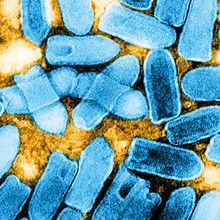Editorial
Issue: Arboviruses and their Vectors
06 August 2019 article

The impact of arboviruses on the world cannot be underestimated, and recent outbreaks caused by arboviruses such as the Zika virus have raised public awareness of their importance. This group of viruses transmitted by arthropods are able to infect plants, animals and humans, and are found in a wide range of arthropods distributed across the globe. In the August edition of Microbiology Today our authors address the diseases caused, diagnostic tests available and the treatments used, as well as highlighting some of the cutting-edge research moving our understanding of arboviruses forward.
Starting with a look into food security, John Carr, Ken Fening, Paul Kuria, Alex Murphy, Josiah Musembi Mutuku, Jane Wamaitha Mwathi and Mildred Ochwo-Ssemakula explain why crop-based agriculture is vulnerable to arbovirus infection. A vast range of arboviruses are capable of infecting plants; this means that virtually all crops are vulnerable to attack. The control of these viruses has traditionally been through vector-based control and the use of insecticides; however, with the rise of resistant vectors and new restrictions on insecticides, it is unclear how crop productivity will be affected. An alternative method of protecting plants has been through the genetic modification of plants, to contain virus-resistant genes. Although effective, there has been limited use of these techniques, and John’s team explore the possibilities for using natural vector deterrents emitted by plants.
Moving from plants to people and to a disease identified by the World Health Organization as an under-researched pathogen, Roger Hewson provides us with an insight into Crimean-Congo haemorrhagic fever. Spread by ticks and having originally been isolated and identified in two separate places (hence the name), this virus can be transmitted between humans once they are infected, giving rise to potential outbreak situations. Roger provides insight into research focused on improving diagnostics and also investigating the potential for vaccines.
Another arbovirus with a substantial impact on human health is the dengue virus – found in tropical and sub-tropical regions across the globe. Although often self-limiting, the virus can cause a severe form of disease thought to be related to cross-reactivity between different dengue viruses. Kevin Maringer explains how this cross-reactivity impacts disease severity and complicates vaccine development. With no specific treatments currently available, research into the disease-carrying mosquitoes might be a route by which disease transmission could be reduced in the future.
When thinking about the control of virus transmission through mosquito vectors, the abilities of the antiviral bacterium Wolbachia are of great interest. Ewa Chrostek provides an insight into how these insect-associated bacteria have potential to protect mosquitoes from virus infection and in doing so break the cycle of virus transmission and disease. The ability of Wolbachia to increase its frequency within a population as well as decrease vector susceptibility to virus infection are some of the reasons why Wolbachia is being used in field trials across the globe.
The potential benefits of another arbovirus control strategy – this time involving the use of genetically modified mosquitoes – is illustrated by Christine Reitmayer, Priscilla Tng and Luke Alphey. Explaining how population suppression or modification can be used to reduce the transmission of disease, they suggest possible targets for modification and highlight the challenges associated with this sort of strategy.
The Comment piece by Rennos Fragkoudis and Barry Atkinson discusses the global impact of arboviruses and how they have helped shape history. Touching on the variety of factors which have changed and continue to alter the range and impact of arboviruses, the authors give us an insight into the dynamic nature of these microbes and the complications involved in predicting what might come next.
Rowena Jenkins
Editor
[email protected]
Image: Negatively-stained transmission electron micrograph showing the prescence of numerous negative-sense, single-stranded RNA vesicular stomatitis virus (VSV) virions. Science Source/Science Photo Library.
